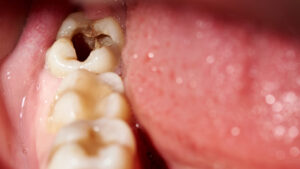Description
A peer-reviewed article written by JanaLee R. Gustafson, RDH; Suzette Foster, BA, RDH; Kandice Swarthout, MS, RDH, LPCAbstract
A growing body of evidence demonstrates that nasal breathing provides clear health advantages over mouth breathing. Nasal breathing delivers warm, filtered air to the body and serves as the first line of defense against pathogenic invasion by bacteria and viruses in the air. It provides positive effects of bronchodilation and vasodilation and increases beneficial nitric oxide production through the paranasal sinuses. Moreover, recent studies that have examined mouth breathing have determined dysfunctional mouth breathing may lead to dental and facial deformities such as increased facial height, mandibular plane, gonial angle, and malocclusion development. Other oral conditions negatively affected by mouth breathing include increased xerostomia levels, gingivitis, halitosis, and tooth decay. Additionally, systemic problems due to mouth breathing include declining cardiovascular health, low sleep quality, fatigue, systemic inflammation, poor academic performance, and declining emotional health.Educational objectives
- Examine peer-reviewed studies regarding the implications of both nasal and mouth breathing
- Evaluate the quality of evidence provided
- Determine why nasal breathing is favored over mouth breathing in support of overall and oral health
Quick Access Code: 22102
Image credit: 479575576 © wxin | gettyimages.com




